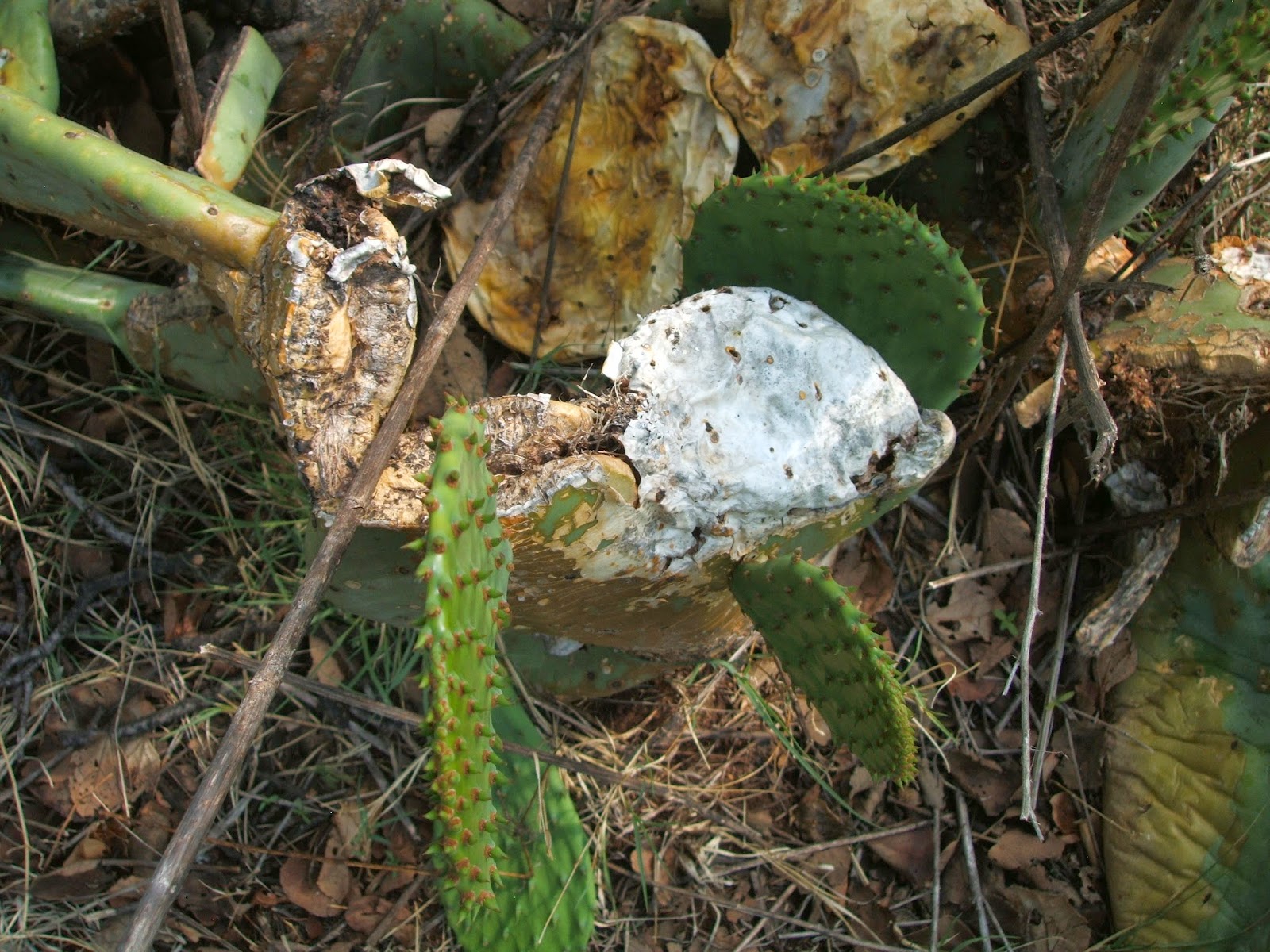Our guide explained that cochineal insects lived on the prickly pears and caused the destruction. She squashed some of the white fluff and a crimson "goo" immediately appeared. Cochineal? Yes indeed, cochineal, the red dye often used in food such as sausages and yoghurt and also in cosmetic products such as lipsticks and blushes. Yuk, not a very appetising thought.
Cochineal, also known as carminic acid, is a chemical extract obtained from the bodies of tiny scale insects, about the size of a pin head, which live on the prickly pears.The dye is thought to protect the insects from predators such as ants. It takes about 60000 insects to make one pound of dye.
The scale insects produce a protective layer of white wax. The females are wingless and do not move around, they slip their beak-like mouth parts into the paddle and feed on the prickly pear sap. They give birth to nymphs which produce long wax filaments. The wind catches these filaments and carries the nymphs to new host plants where they form a new colony and wreak further havoc.
Whoever would have thought such a tiny insect could cause such destruction and produce a dye that is widely used in food and cosmetics? I, for one, didn't.






Fascinating, Ruth. I'm glad I didn't know this when I ate some prickly pear ice-cream in Israel!
ReplyDeleteWow, very interesting. Great info to stick into a novel at some point perhaps as well?
ReplyDeleteInteresting post, Ruth. Hmm, I may have to rethink wearing lipstick :)
ReplyDeleteIt's a great spring to see cacti flowers!
ReplyDeleteRuth, the cacti flowers are pretty :) I knew cochineal came from a beetle, but I didn't realise they live on prickly pear cacti.
ReplyDelete